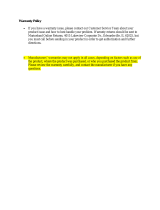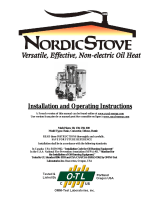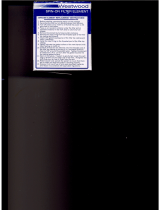
www.dickinsonmarine.com ~ info@dickinsonmarine.com
Form#7.2-229 Issue#2
13
6. Fuel System Installation
For efficient and safe operation of the heater, follow all recommendations
for properly installing the fuel system.
DANGER: Never use gasoline in a heater. Use only #2 diesel, #1 stove oil
or kerosene. The valves are factory calibrated to #2 diesel; if #1stove oil or
kerosene is preferred, the valves can be re-calibrated to suit those viscosities.
*** If in colder temperatures it may be wise to burn kerosene or add fuel
additives to your fuel to keep the fuel viscosity thin for correct operation. In
some cases, a valve with a higher flow rate may be needed.
Fuel Supply & Overflow Feature
The fuel supply fitting on the oil metering valve is a 3/8” (10mm) flare
fitting and the overflow is a 1/4” (6mm) flare fitting. To make these
connections you will need a flaring tool to connect the 3/8” flare nut as well
as a 1/4” flare nut. ACR (refrigeration) copper tubing should be used for the
first 3 feet of fuel line from the heater. Approved hose can be used for the
remainder of the installation. Run the fuel lines as straight as possible to
avoid air locks. Check all connections for any leaks.
The overflow safety feature is designed to allow the controlled escape of
fuel from the heater in case of over pressurization. If dirt, debris, or too
much pressure gets into the needle and seat inside the valve, the fuel will rise
and overflow out of the valve and away from the heater. It is common to get
a few drips now and then from the movement in rough waters, however,
more then a few drops of fuel from the overflow indicates the need to
service and clean the valve.
Under NO circumstances plug the overflow fitting!! A fuel line must be
taken from the overflow fitting back to the main tank if the fuel is supplied
from the main tank. If the fuel is supplied from a day tank, then run the
overflow line to a container away from the heat source. The fuel overflow is
a gravity escape. Do not install the overflow line so that is goes up or in
loops as this will cause an air lock and block the fuel from escaping. Plastic,
rubber or copper tubing may be used for the overflow line.
Note: If the your fuel tank vent or fill tube is higher than the valve of the
heater, and the overflow of the heater goes back to the main tank, there may
be a chance when re-filling that the fuel will back flow up the overflow and
























